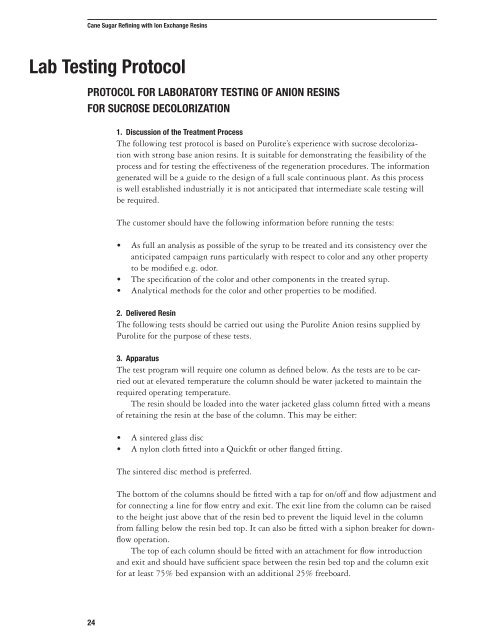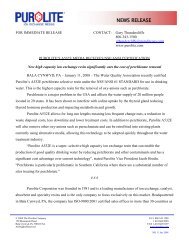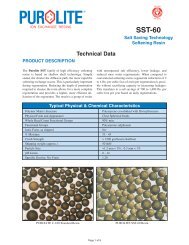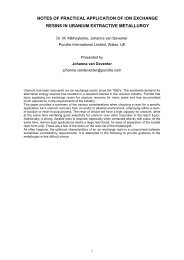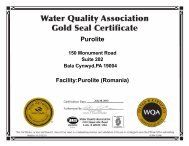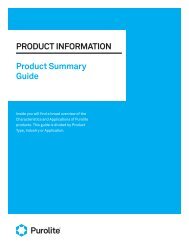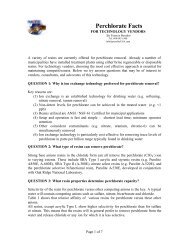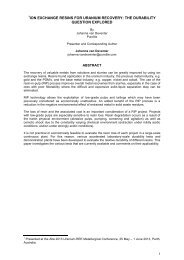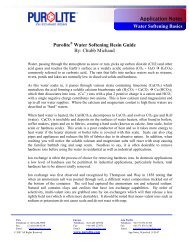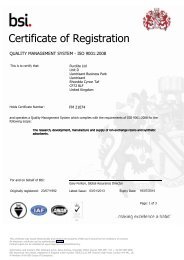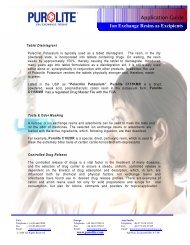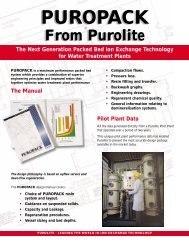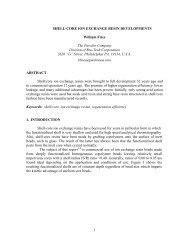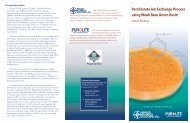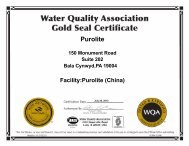Cane Sugar Refining - Purolite
Cane Sugar Refining - Purolite
Cane Sugar Refining - Purolite
You also want an ePaper? Increase the reach of your titles
YUMPU automatically turns print PDFs into web optimized ePapers that Google loves.
<strong>Cane</strong> <strong>Sugar</strong> <strong>Refining</strong> with Ion Exchange Resins<br />
Lab Testing Protocol<br />
PROTOCOL FOR LABORATORY TESTING OF ANION RESINS<br />
FOR SUCROSE DECOLORIZATION<br />
24<br />
1. Discussion of the Treatment Process<br />
The following test protocol is based on <strong>Purolite</strong>’s experience with sucrose decolorization<br />
with strong base anion resins. It is suitable for demonstrating the feasibility of the<br />
process and for testing the effectiveness of the regeneration procedures. The information<br />
generated will be a guide to the design of a full scale continuous plant. As this process<br />
is well established industrially it is not anticipated that intermediate scale testing will<br />
be required.<br />
The customer should have the following information before running the tests:<br />
•<br />
•<br />
•<br />
As full an analysis as possible of the syrup to be treated and its consistency over the<br />
anticipated campaign runs particularly with respect to color and any other property<br />
to be modified e.g. odor.<br />
The specification of the color and other components in the treated syrup.<br />
Analytical methods for the color and other properties to be modified.<br />
2. Delivered Resin<br />
The following tests should be carried out using the <strong>Purolite</strong> Anion resins supplied by<br />
<strong>Purolite</strong> for the purpose of these tests.<br />
3. Apparatus<br />
The test program will require one column as defined below. As the tests are to be carried<br />
out at elevated temperature the column should be water jacketed to maintain the<br />
required operating temperature.<br />
The resin should be loaded into the water jacketed glass column fitted with a means<br />
of retaining the resin at the base of the column. This may be either:<br />
•<br />
•<br />
A sintered glass disc<br />
A nylon cloth fitted into a Quickfit or other flanged fitting.<br />
The sintered disc method is preferred.<br />
The bottom of the columns should be fitted with a tap for on/off and flow adjustment and<br />
for connecting a line for flow entry and exit. The exit line from the column can be raised<br />
to the height just above that of the resin bed to prevent the liquid level in the column<br />
from falling below the resin bed top. It can also be fitted with a siphon breaker for downflow<br />
operation.<br />
The top of each column should be fitted with an attachment for flow introduction<br />
and exit and should have sufficient space between the resin bed top and the column exit<br />
for at least 75% bed expansion with an additional 25% freeboard.


